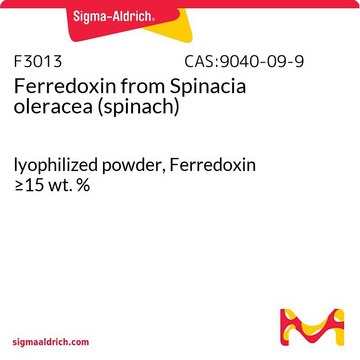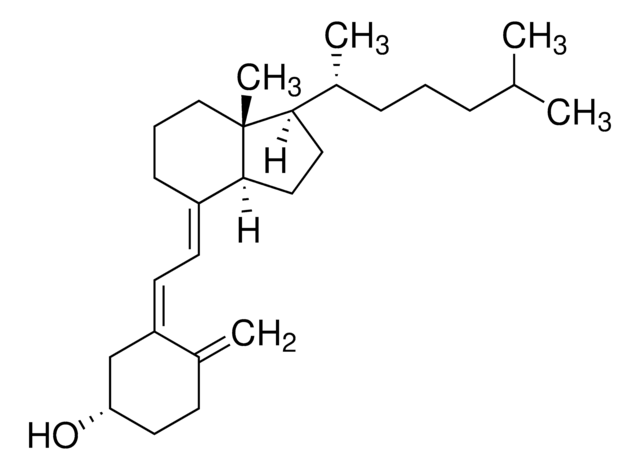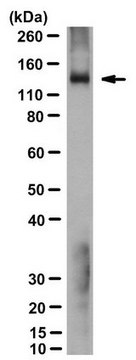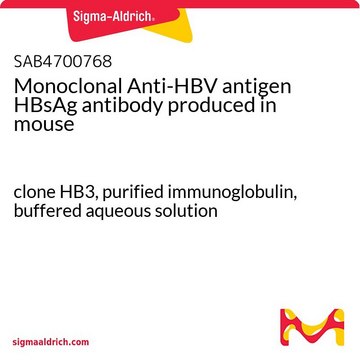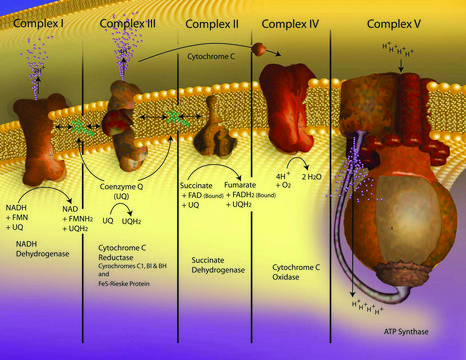MABF2087
Anti-Adenylate Cyclase Toxin Antibody, B. pertussis Antibody, clone 9D4
clone 9D4, from mouse
Synonym(s):
Adenylate cyclase toxin, Bordetella pertussis Toxin, ACT
Sign Into View Organizational & Contract Pricing
All Photos(1)
About This Item
UNSPSC Code:
12352203
eCl@ss:
32160702
NACRES:
NA.43
Recommended Products
biological source
mouse
antibody form
purified immunoglobulin
antibody product type
primary antibodies
clone
9D4, monoclonal
species reactivity
bacteria
packaging
antibody small pack of 25 μL
technique(s)
dot blot: suitable
western blot: suitable
isotype
IgG2aλ
target post-translational modification
unmodified
General description
Adenylate Cyclase Toxin (UniProt: C8C508; also known as ACT or Cya A) is one of several virulence factors produced by the bacterium Bordetella pertussis. Bordetella pertussis, a gram-negative bacterium, is shown to be the causative agent for whooping cough. It produces several virulence factors, including Cya A. The CyaA toxin is a bifunctional protein of 1,706 residues consisting of an NH2-terminal catalytic domain of 400 amino acids and a COOH-terminal part with 1,306 residues. The CyaA polypeptide is synthesized as an inactive protoxin, which is then converted to an active toxin by posttranslational palmitoylation of two internal lysine residues (Lys 856 and 963). Upon interaction of its C-terminal hemolysin moiety with the cell surface receptor alphaM-beta2 integrin ((Cd11b/Cd18), the N-terminal cyclase domain translocates into the host cell cytosol where it generates supraphysiological levels of cAMP concentration, which inhibits host cell anti-bacterial activities and apoptotic death of macrophages. Cya A toxin is also shown to elicit potassium ion efflux from erythrocytes in a process that is thought to be a precursor event to osmotic lysis of erythrocytes. Clone 9D4 binds to an epitope of AC toxin in the glycine- and aspartate- rich region. Hence, it recognizes other RTX toxins in addition to AC toxin. Clone 9D4 increases the fraction of AC toxin (CyaA) that is secreted to cell surface and release of CyaA into culture supernatant(Ref.: Guermonprez, P., et al. (2001). J. Exp. Med. 193(9); 1035-1044; Gray, MC., et al. (2001). J. Bacteriol. 183(20); 5904-5910; Holubova, J., et al. (2012). Infect. Immun. 80(3); 1181-1192).
Specificity
Clone 9D4 is a mouse monoclonal antibody that detects Adenylate cyclase (AC) toxin from Bordetella pertussis.
Immunogen
Adenylate cyclase toxin from Bordetella pertussis.
Application
Anti-Adenylate Cyclase Toxin, B. pertussis, clone 9D4, Cat. No. MABF2087 is a mouse monoclonal antibody that detects Adenylate cyclase (AC) toxin from Bordetella pertussis and has been tested for use in Dot Blot, Function Assay and Western Blotting.
Function Analysis: A representative lot increased the fraction of AC toxin (CyaA) that is secreted to cell surface and release of CyaA into culture supernatant. (Gray, M.C., et. al. (2001). J Bacteriol. 183(20):5904-10).
Western Blotting Analysis: A representative lot detected Adenylate Cyclase Toxin, B. pertussis in Western Blotting applications (Holubova, J., et. al. (2012). Infect Immun. 80(3):1181-92; Lee, S.J., et. al. (1999). Infect Immun. 67(5):2090-5).
Dot Blot Analysis: A representative lot detected Adenylate Cyclase Toxin, B. pertussis in Dot Blot applications (Lee, S.J., et. al. (1999). Infect Immun. 67(5):2090-5).
Western Blotting Analysis: A representative lot detected Adenylate Cyclase Toxin, B. pertussis in Western Blotting applications (Holubova, J., et. al. (2012). Infect Immun. 80(3):1181-92; Lee, S.J., et. al. (1999). Infect Immun. 67(5):2090-5).
Dot Blot Analysis: A representative lot detected Adenylate Cyclase Toxin, B. pertussis in Dot Blot applications (Lee, S.J., et. al. (1999). Infect Immun. 67(5):2090-5).
Research Category
Inflammation & Immunology
Inflammation & Immunology
Quality
Evaluated by Western Blotting in Adenylate cyclase toxin from Bordetella pertussis.
Western Blotting Analysis: A 1:1,000 dilution of this antibody detected Adenylate Cyclase Toxin from from Bordetella pertussis.
Western Blotting Analysis: A 1:1,000 dilution of this antibody detected Adenylate Cyclase Toxin from from Bordetella pertussis.
Target description
~220 kDa observed.
Physical form
Format: Purified
Protein G purified
Purified mouse monoclonal antibody IgG2a in PBS without preservatives.
Storage and Stability
Stable for 1 year at -20°C from date of receipt. Handling Recommendations: Upon receipt and prior to removing the cap, centrifuge the vial and gently mix the solution. Aliquot into microcentrifuge tubes and store at -20°C. Avoid repeated freeze/thaw cycles, which may damage IgG and affect product performance.
Other Notes
Concentration: Please refer to lot specific datasheet.
Disclaimer
Unless otherwise stated in our catalog or other company documentation accompanying the product(s), our products are intended for research use only and are not to be used for any other purpose, which includes but is not limited to, unauthorized commercial uses, in vitro diagnostic uses, ex vivo or in vivo therapeutic uses or any type of consumption or application to humans or animals.
Not finding the right product?
Try our Product Selector Tool.
Regulatory Information
新产品
Certificates of Analysis (COA)
Search for Certificates of Analysis (COA) by entering the products Lot/Batch Number. Lot and Batch Numbers can be found on a product’s label following the words ‘Lot’ or ‘Batch’.
Already Own This Product?
Find documentation for the products that you have recently purchased in the Document Library.
Our team of scientists has experience in all areas of research including Life Science, Material Science, Chemical Synthesis, Chromatography, Analytical and many others.
Contact Technical Service

